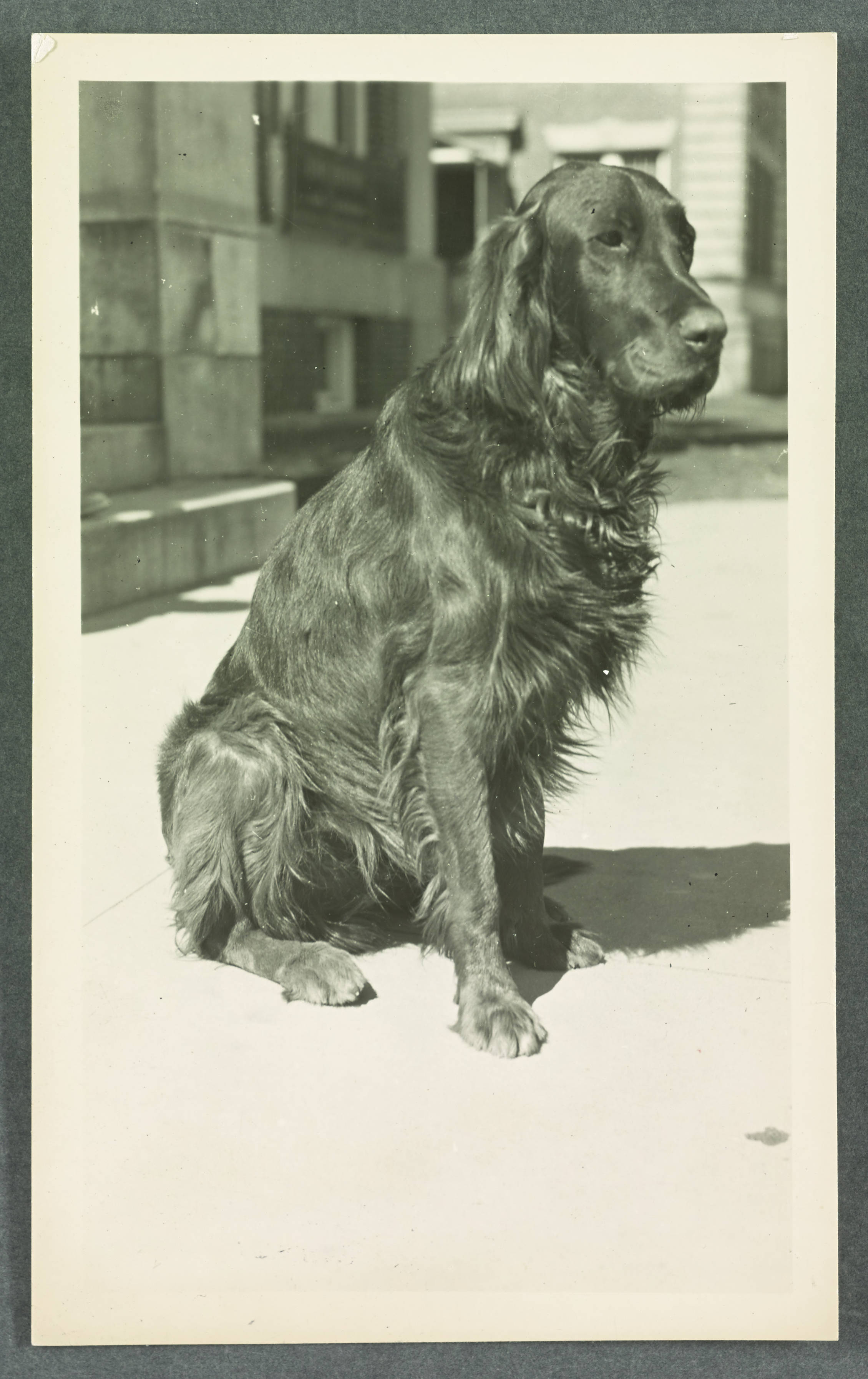Our series examining an Image of the Week from the photographic files, by Kevin Warstadt, Edward Connery Lathem ’51 Digital Library Fellow.

Setter ca. 1943
Pictured above is a photo from a folder labeled Dogs 1. On the back of the photo, a note reads “Dore Kendall’s Setter [1943?] name forgotten.” It was this note that caused the photo jump out to me. It strikes me as a strange thing to see a photo of a dog in this portrait style. Obviously, the dog had no conception of photography. It was positioned and captured in time for the sake of its owners. Now its owners are gone and the dog’s name is forgotten, yet its photo remains like a fossilized footprint. In his essay “Why Look at Animals,” John Berger writes on the relationship between owner and pet.
The pet completes him, offering responses to aspects of his character which would otherwise remain unconfirmed. He can be to his pet what he is not to anybody or anything else. Furthermore, the pet can be conditioned to react as though it, too, recognizes this. The pet offers its owner a mirror to a part that is otherwise never reflected. But, since in this relationship the autonomy of both parties has been lost (the owner has become the-special-man-he-is-only-to-his-pet, and the animal has become dependent on its owner for every physical need), the parallelism of their separate lives has been destroyed.
further
…animals are always the observed. The fact that they can observe us has lost all significance. They are the objects of our ever-extending knowledge. What we know about them is an index of our power, and thus an index of what separates us from them. The more we know, the further away they are.
The dog here exists outside of the context of its relationship to its owner, yet at the same time within it, as the existence of the photo necessitates this context. The dog has entered into a limbo state, in which it retains an aspect of the identity assigned to it (as Dore Kendall’s setter) but has lost a part of it as well (it’s name). Because the dog could produce no works, this photo is its only means to remain beyond the bounds of life. Is it cruel that this creature should be forced to exist in this state, not remembered yet not forgotten? No, I think, as no harm is done. But it is uncanny to look upon a physical object that so immediately captures the fleeting nature of life and identity.
See more photos of dogs here.


